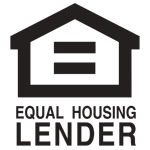The 411 on Loan Structure

First things first. Loan structure refers to the components that make up a loan, like the loan term, interest rate, collateral, and repayment.
Amortization is the process of spreading out a loan into payments that consist of both principal and interest over a set timeline, called an amortization schedule. A portion of each payment goes towards interest costs (what your lender gets paid for the loan) and reducing your loan balance (also known as paying down the loan principal). While some commercial loans are fully amortizing, some business loans have a balloon payment (principal amount due at maturity).
Interest rate is the percentage of the loan sum you pay back to the bank for borrowing money.
LTV, aka loan to value ratio, is the ratio between your loan amount and the value of the collateral.
Origination is the process of a borrower applying for a new loan, and a lender processing that application. Origination generally includes all the steps from taking a loan application up to disbursal of funds.
Principal refers to the amount of the loan, excluding interest or other earnings, that must be repaid to the Bank.
Term of loan will be the length of time between the origination and the maturity date. Depending on the payment schedule of the loan, you may have a principal balloon payment at the end of the loan term.
Underwriting is the process of calculating the associated risk of a loan by checking the borrower’s credentials. Typically carried out by a financial institution, an underwriter may look at the borrower’s credit history, cash flow coverage, collateral, etc. to determine the approved loan terms.
Putting all these into practice can be tricky—math isn’t everyone’s strong suit—but a lender can help you determine your total payment (principal + interest), as well as your monthly payments with an amortization schedule.
Now that you know the basic, let’s take the next step together. Reach out to our expert Lenders in your area to help get the financing you need for your business to reach its goals.














